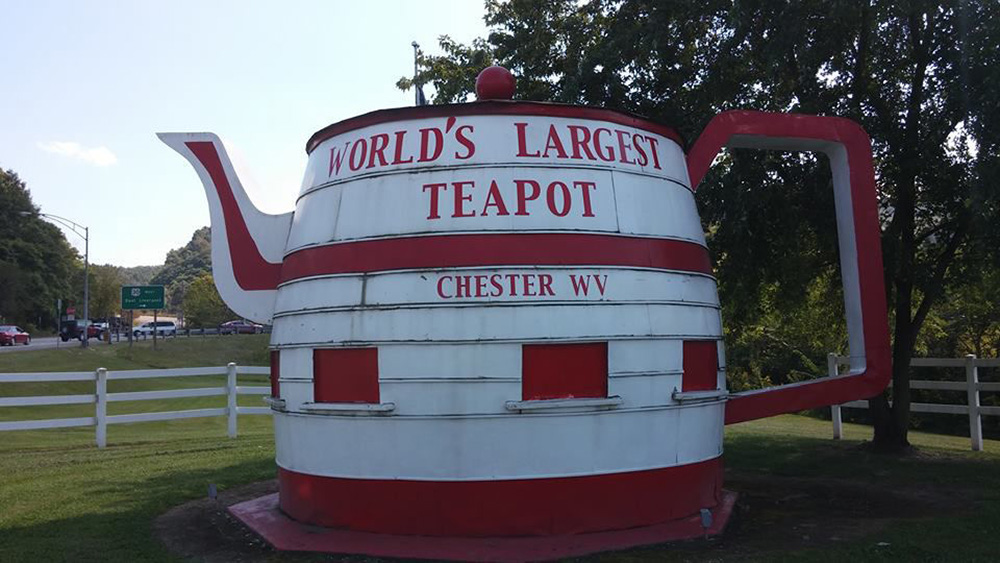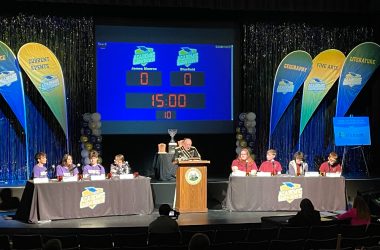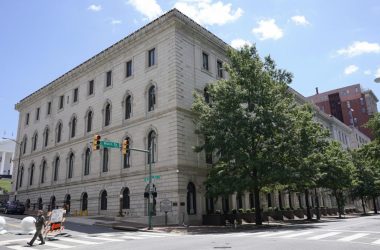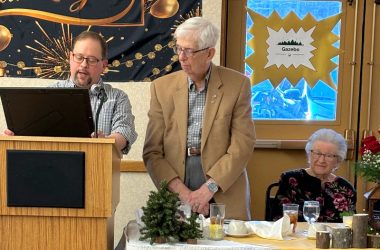By CHARLES YOUNG
The Exponent Telegram
CLARKSBURG, W.Va. — West Virginia has lots of top-tier tourist destinations. From the New River Gorge Bridge to the site of abolitionist John Brown’s raid on the United States arsenal at Harper’s Ferry, the state has no shortage of world-class places to visit.
But for those who are looking for something a bit less classy and a touch more tacky, the Mountain State is also home to a thriving industry of offbeat and novelty attractions. By heading just a bit off from the beaten path, adventurous tourists can find a whole slew of unique and interesting curiosities around the state.
Mystery Hole
The most famous and frequently visited offbeat attraction in the state is the Mystery Hole in Ansted — located near Hawks Nest State Park and the New River Gorge Bridge.

(Submitted photo)
The ramshackle building containing the Mystery Hole is hard to miss. It is brightly painted and adorned with spirals, question marks and Einstein’s famous e=MC2 formula. A mural by the West Virginia artist Sherd Maynard Jr. is featured on one outside wall and the rear end of a Volkswagen Beetle bearing the phrases “Redneck Taxi” and “Flower Power” juts out from one side of the building as if it crashed there. Visitors are greeted by a statue of a giant gorilla squatting on the roof next to a figure of a waving clown.
Sandy Morrison, who has owned the business along with husband Will since 1999, said she couldn’t give too much away about what is actually contained in the Mystery Hole or the “phenomenas” said to occur there.
“I don’t want to reveal too much,” she said. “You’re not supposed to tell what’s in there; it’s been a mystery since 1973.”
Morrison would say, however, that while taking the “guided tour where you defy the laws of gravity,” visitors should keep their eyes wide and their minds open to possibilities.
“All kinds of strange things happen down there,” she said. “A ball rolls uphill faster than it does down. It’s unique; it’s one-of-a-kind; it’s different. It’s got some comedy to it as well and it’s just an old-fashioned roadside attraction that is a must-see.”
Why she and her husband decided to purchase the attraction is as much of a riddle as the Mystery Hole itself, Morrison said.
“That’s a mystery,” she said. “It is something different and we just thought it would be fun.”
The couple bought the attraction from Wilson’s widow and have done their best to restore it back to its former glory, Morrison said.
“We basically just brought it back to the original,” she said. “We wanted to keep it like it was. The original owner was successful with it, so we just basically did a lot of cleaning and painting and added some items to the gift shop, but pretty much keep it like it was.”
As with any good tourist attraction, the real heart of the Mystery Hole is its gift shop.
Along with the “famous” Mystery Hole bumper sticker, Morrison said the gift shop is filled with everything from hats to mouse pads.
“You name it,” she said. “Everything you can think of that we can put Mystery Hole on, we’ve got it.”
The Mystery Hole is open from May through October and costs $7 for adults, and $6 for 11 years old and younger.
For more information on the Mystery Hole, www.mysteryhole.com/home.html.
Coal Country Mini Golf
Travelers who enjoy learning about regional history while playing miniature golf will love Fairmont’s Coal Country Mini Golf.

(Submitted photo)
The mining-themed 18-hole course is meant to be both fun and educational, said course manager Sherry Coogle.
“All of our holes have something to do with the coal mines; most of them have equipment from the older mines,” she said.
The site even features a nonprofit museum associated with the Northern Appalachian Coal Mining Heritage Association.
The museum features multiple interactive exhibits aimed at teaching visitors about the past and present of the mining industry.
“We have a display set up on safety and underground mines, we also have interactive mine training software” Coogle said. “There is a coal sorting and a coal shoveling station outside of the museum.”
The course was founded in 1998 by retired coal miner Mike Rohaly, Coogle said.
“When he moved here from Pennsylvania, he ended up buying a lot of property and making the golf course,” she said. “It is what he wanted to do with his retirement.”
Most people visit the course after spotting the 22-foot tall statue of a coal miner — named “Big John” — from Interstate 79, Coogle said.
“I do very little advertising,” she said. “Most of my stuff is word of mouth. It’s kind of worked that way.”
The course was recently visited by members of a family from Illinois who went out of their way just to visit the attraction during a trip to Florida, Coogle said.
“They were trying to find stuff to do on their trip,” she said. “They actually made plans to stop here.”
Coal Country Mini Golf is open from 11 a.m. to 11 p.m. daily in June, July and August — depending on the weather.
For more information, visit www.coalcountrywv.com.
U.S. Naval Poster Museum
Patriotic and nautically inclined tourists will enjoy their trip to the U.S. Naval Poster Museum in Point Pleasant.
On its walls are displayed Field’s extensive collection of Naval recruitment posters and other Naval memorabilia.
“It’s a collection of U.S. Navy recruiting posters that span from 1898 to the present time,” she said.
Fields first began collecting Navy posters just to have them, she said.
The decision to start a museum was born out of necessity after Friend’s collection began to take up more and more room in her home.
“They were in tubes in every closet of my house, in boxes underneath every bed, and I had to do something with them,” she said.
To give her collection a preeminent home where it can be pursued by all, Fields leased a commercial space in downtown Point Pleasant in 2014 and invested thousands of dollars in frames.
Although the museum is only open on weekends and special occasions, Fields said her collection gets hundreds of visitors each year.
“It’s not just navy veterans who come,” she said. “It is a lot of people who maybe their dad or their granddad were veterans or maybe their grandma might have been a Navy WAVE and they just want to see the history of it.”
For more information on the U.S. Naval Poster Museum, visit www.facebook.com/USNAVYPOSTERMUSEUM/.
World’s Largest Teapot
Tourists looking to see something larger than life need look no further then the Northern Panhandle town of Chester, home of the world’s largest teapot.
The 14-foot-high kettle has been Chester’s claim to fame since 1938 when William Devon outfitted a giant root beer barrel — originally an advertisement for Hire’s Root Beer — to look like a massive teapot.

(Submitted photo)
Devon used the gigantic teapot as an advertisement for his pottery business and sold concessions and souvenirs out of it.
After going through multiple changes over ownership in the decades that followed, the teapot had fallen into disrepair by the early 1980s.
Susan Hineman, project manager for the restoration of the teapot, said she and other residents of Chester banded together to raise funds to rehab the old landmark.
“We raised $20,000,” she said. “But we had so many volunteer craftsmen come in that the majority of the work was all donated. A lot of people wanted to see the teapot saved; it is kind of an icon for Chester.”
Since its restoration, the teapot has again become a draw for tourists from all around the region, Hineman said.
“We are featured in the Highways Byways magazine, there was a picture in National Geographic and there was one in Good Housekeeping magazine,” she said.
Although tourists stop by to see the teapot and take pictures on an almost daily basis, Hineman said the teapot is only officially open one day a year, Aug. 3, known as “Teapot Day.”
On “Teapot Day” the town plays host to thousands of visitors who come to see the teapot, enjoy live music and purchase souvenirs.
“There are a lot of people who like to come and they enjoy seeing it,” Hineman said.
For more information about the World’s Largest Teapot visit, www.facebook.com/The-Worlds-Largest-Teapot-1577413125827035/.
See more from The Exponent Telegram






